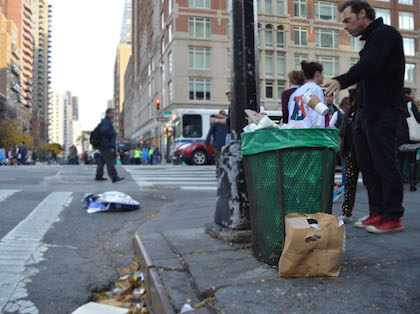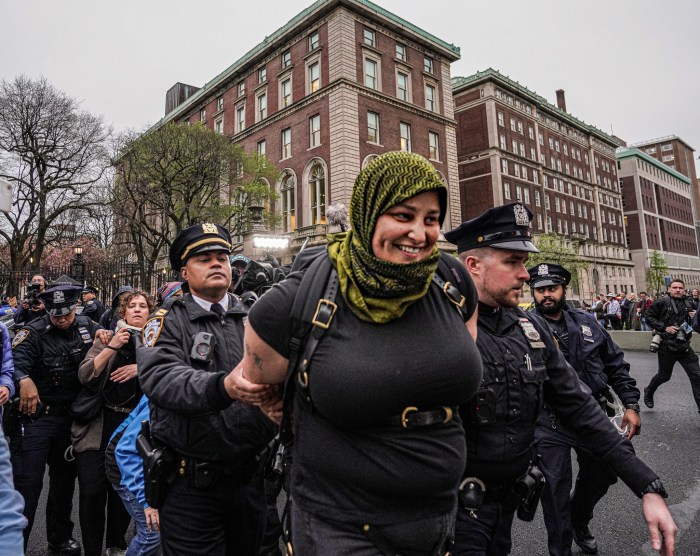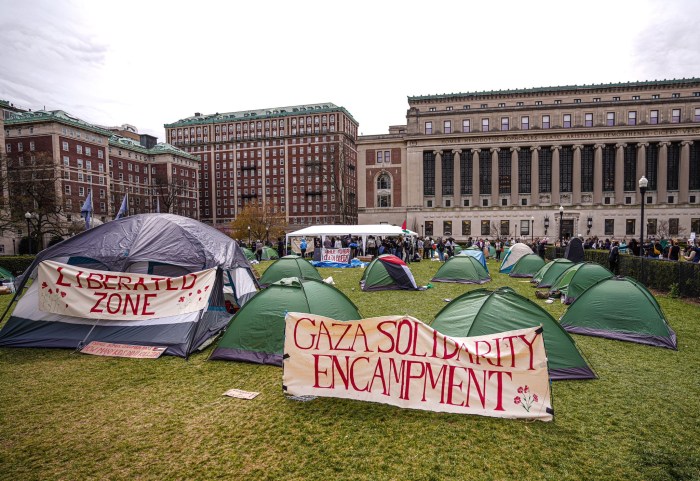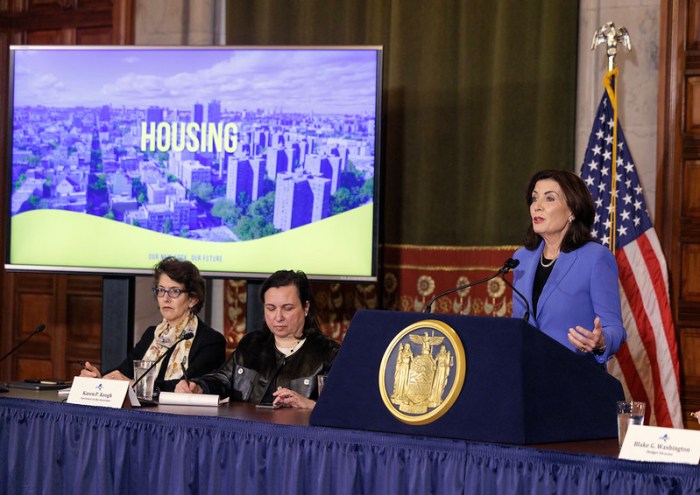
BY JACKSON CHEN | Local officials and stakeholders are working together in an effort to bring a Business Improvement District to the busiest stretch of East 86th Street and surrounding commercial strips.
Home to one of the more stressed train stations in the city, East 86th Street has garbage cans that are often filled past the brim, with sidewalks littered with floating scraps.
“The garbage cans are overflowing, there are vendors who are not obeying the rules, there’s paper on the sidewalks and in the gutter,” said Susan Gottridge, vice president of the East 86th Street Association.
To resolve the sanitation situation, among others issues, the idea of a Business Improvement District (BID) has recently been in the works. Gottridge, who sits on the steering committee charged with creating the East 86th Street BID, said the problem stems from the area being heavily trafficked, especially immediately surrounding the extremely busy 86th Street train station for the 4, 5, and 6 lines at Lexington Avenue.
Usually located in areas that face unique challenges or economic or environmental stresses, BIDs are nonprofit organizations that rely on modest assessments on nearby businesses and property owners and more token contributions from residential buildings to keep a neighborhood well maintained. Providing services including sanitation and neighborhood beautification, 72 BIDs have already cropped up across the city. For the area around East 86th Street to become Manhattan’s 26th BID, City Councilmembers Ben Kallos and Daniel Garodnick have been leading a steering committee that includes the participation of the East 86th Street Association, Carnegie Hill Neighbors, the Manhattan Chamber of Commerce, and area businesses.
“86th Street is one of the busiest commercial corridors in the city,” Kallos said, noting that the 86th Street stop on the Lexington Avenue line is among the subway system’s top 10 in commuter usage. “Many other locations have BIDs, and this one was long overdue.”
The effort to create the district will step up this week as a survey is sent out to take the neighborhood’s temperature on having a BID. The survey includes basic information about BIDs and a questionnaire regarding neighborhood conditions, quality of life problems, and desired services.
“Rather than trying to deal with the problems on a case-by-case basis, it would be better to deal with it in the long term by creating a BID for that part of the neighborhood,” Kallos said.
BIDs vary one from another based on what local stakeholders deem as priorities. According to the survey, which was provided to Manhattan Express, residents and owners can check off services like sidewalk sweeping, trash pick-ups, seasonal flowers, safety and security initiatives, and business marketing, among many others.
At this early stage in the process, the borders of the East 86th Street district have yet to be determined. While the district could range as widely as from East 80th Street north to East 92nd Street and from Lexington Avenue east to First Avenue, Kallos said final boundaries would be determined through community input and the steering committee’s recommendations.
In addition to addressing this issue, the steering committee will also determine the operating budget to be funded through community assessments. Residential buildings can expect to pay $1 a year, according to Kallos, while commercial properties’ contributions will be based on either square footage or property value.
Kallos said he expects the budget to most likely come in somewhere in the six figures. In comparison, BIDs in Midtown have budgets exceeding $5 million, while other districts in Brooklyn and the Bronx get by with less than $250,000.
“It doesn’t have to be a BID that has to advertise worldwide,” said Lo van der Valk, president of the Carnegie Hill Neighbors. “We don’t have to do the extra bells and whistles that BIDs sometimes do. We can devote it to the cleaning.”
While many members of the steering committee have seen generally positive attitudes toward the idea of a BID, this will be the third attempt at forming one around East 86th Street.
According to Nancy Ploeger, president of the Manhattan Chamber of Commerce, the first two attempts fizzled after major property owners in the middle of the proposed BID showed strong opposition.
Ploeger, who sits on the steering committee, said the latest BID proposal has cast a wide net for stakeholders, and she doesn’t expect many naysayers. The general public, she explained, has developed a more positive view of BIDs in recent years, having seen the benefits they have brought to other neighborhoods.
Kallos said he’s been able to learn from past failures and expects this BID to garner a strong community vote.
“The goal is if we can get 50 percent plus one of the stakeholders to come to the meetings, we should be in great shape,” he said. “We’re just trying to make sure the community, businesses, and commercial property owners have a voice in the decision.”
Any final plan for a BID would require City Council approval.

















